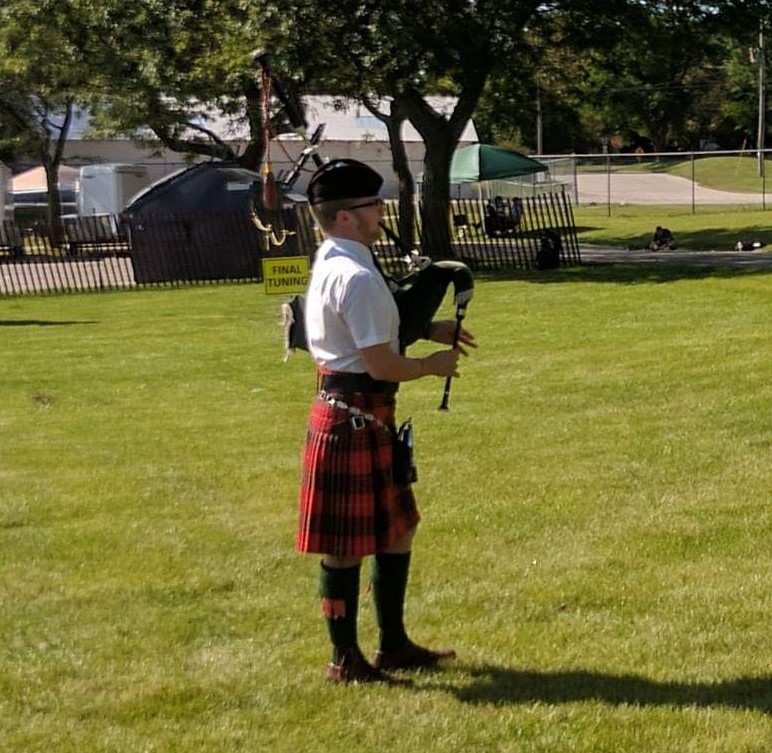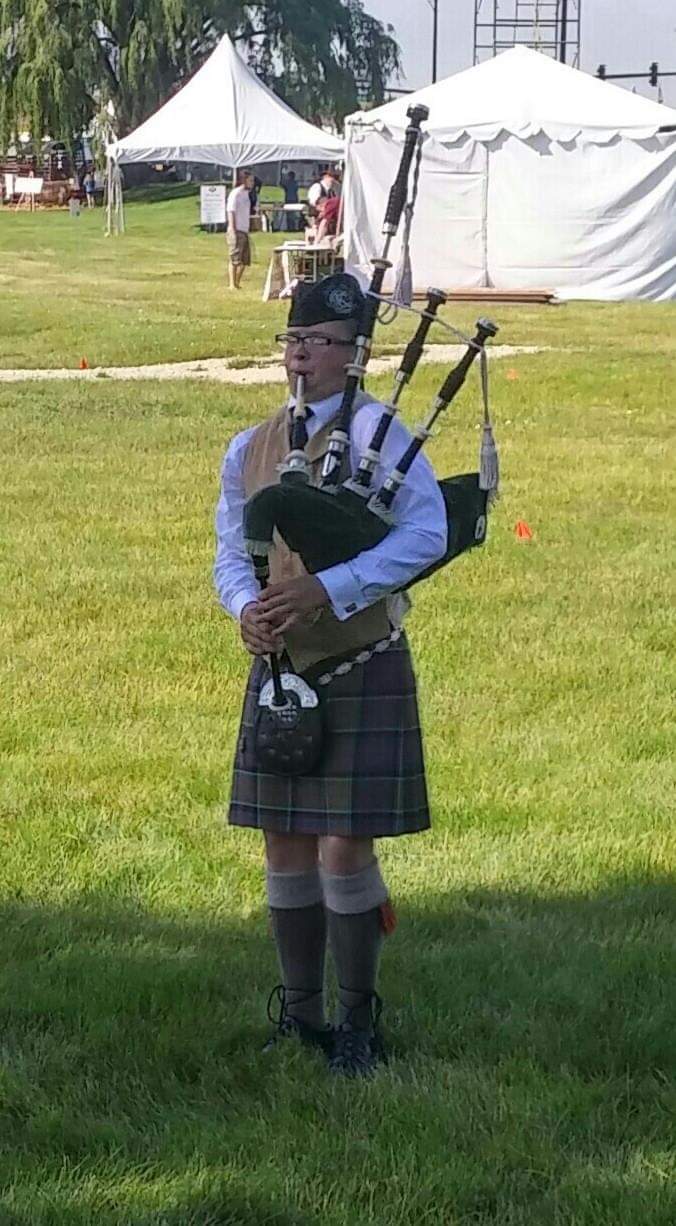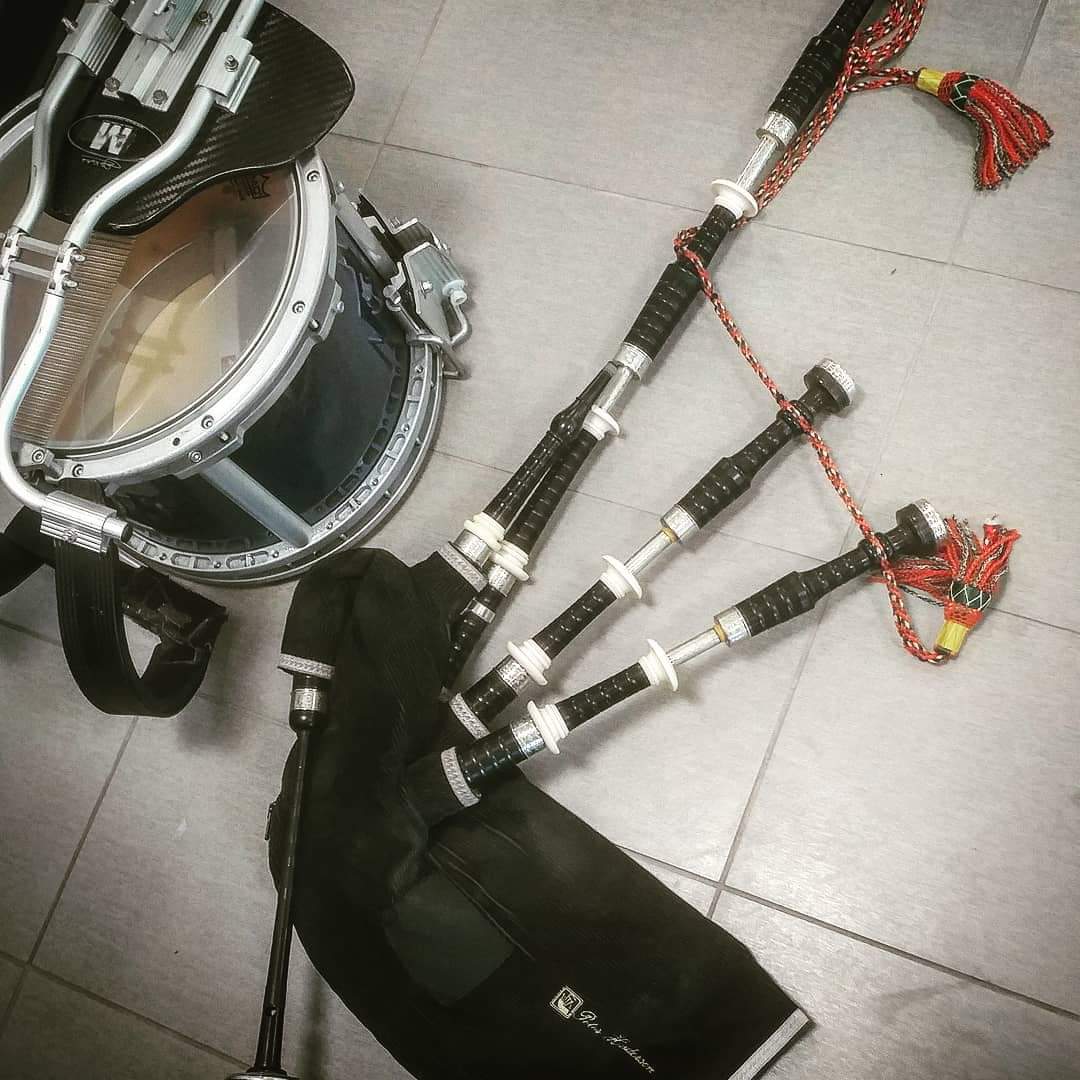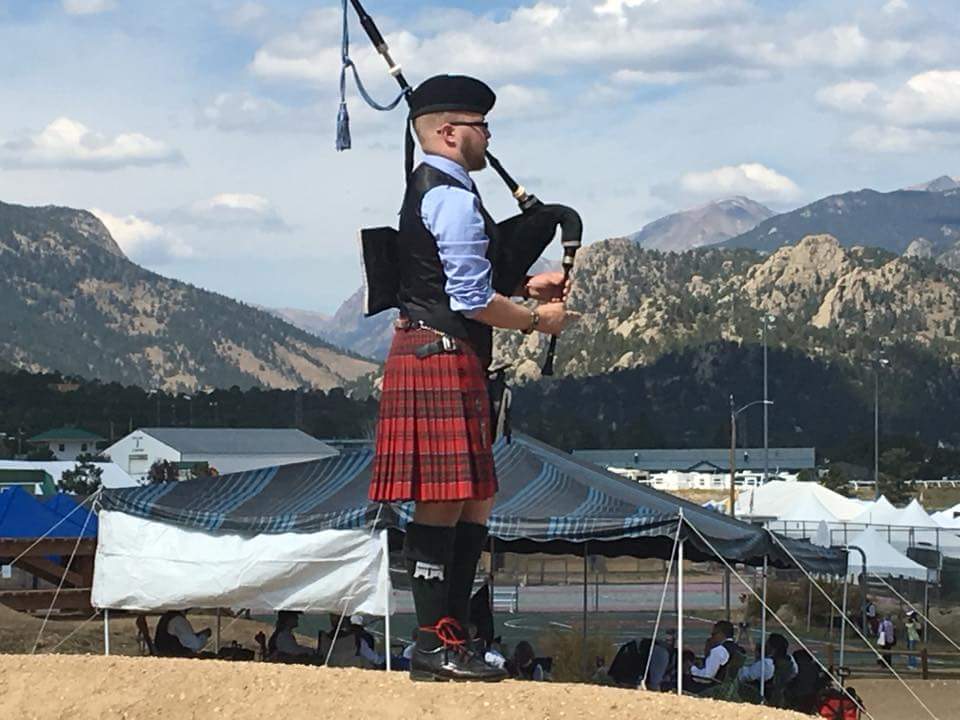How does Temperature, Moisture, and Storage affect my Bagpipes?
Posted by Griffin Hall on 7th Jan 2020

The Great Highland Bagpipe is, easily, one of the most temperamental instruments on the planet. The instrument is built to create problems for itself which often leads to bad tone. Pipers will often misjudge the instability of their instrument as a reed problem or faulty equipment, when the actual fix could be much less involved. Your pipes are set to play best in the area that you play most often. Whether that is the band practice hall, outdoors, or in your own practice room. The climate in these areas can differ greatly and being able to recognize the attributes of the surrounding area make the challenge of locking in your sound much easier.
Standard Set-Up:
Every set of bagpipes should have a moisture control system that prevents water from accumulating on their reeds. An instrument without this will suffer from wet reeds, encouraging an unstable instrument. Every pipe chanter should have a reed protector that it rests in after a playing session. Most recommended styles come with a vent hole of some kind but humidor-style caps with adjustable humidity levels also exist. Your instrument should also have a soft-sided case where the pipes rest and are seated for transport. Hard cases mean that the pipes can roll around and knock against themselves which could chip and break parts of the instrument. These accessories are standard with every instrument as they help keep the pipes in optimal playing condition. Before looking at how the weather affects your pipes, you'll need to make sure that your current set-up is stable as well.
Acclimatization:
The best thing to do before playing anywhere is let the instrument sit a good while to naturally adjust to the new temperature and humidity levels. We can try to compensate for things like this with good storage, but we're basically minimizing the extreme transition. After letting the pipes sit, if time allows, you should blow the drones before putting the chanter in. This does two things: 1) It confirms that everything north of the chanter is working well, airtight, and stable. 2) It stabilizes the internal bag temperature. This is a huge aspect in warming up. Trying to tune the chanter and drones will be a continually changing process until the bag temperature is stable. All too often, folks arrive to practice with cold pipes, and blowing the drones for 5 or so minutes really does help the drones/bag to get stable much faster. Hide and skin bags as well as cane drone reeds hugely benefit from this method of warming up.
Temperature:
In general, changes in temperature affect more of the wood and less of the reeds. Depending upon the temperature of the place you're playing, your pipes will shift from location to location. You'll always want to allow at least 15 minutes before you warm up to acclimate your pipes to the area around you. Here is what you can expect:
Heat:
Playing in warmer temperatures inherently makes the pitch of your instrument sharper than normal. Generally, this means your tuning pins will sit lower, however, if your pipes are in the sun, you may find that your drones actually start to climb higher on the pins as if they were flatter. This is only a reaction with the wood as you're still playing at a sharper pitch. You may find your pipes to be somewhat easier to play as well since the heat makes the reeds more flexible. You'll want to avoid playing pipes in direct sunlight for over extended periods of time, the shade is your friend. When not playing the pipes, it is even a smart idea to keep them in your own shadow by your side so that their exposure to the sun is limited.
Cold:
Colder climates promote a lower pitch of the entire instrument. You'll find that your drones will tune higher than normal and your chanter will begin to sound dull. You may find that your pipes become harder in colder weather since the reeds are more stiff and are harder to vibrate. Moisture will also accumulate at a greater level in this climate as well. Some pipers might choose a more moisture restrictive water trap when the winter months hit. It is always recommended to play less when it is colder outside.
Humidity:
I have usually found that humidity affects the pipe chanter more than the drones. It'll change the way the wood behaves but more importantly, it will affect the behavior of the reeds. Allow for at least 15 minutes of acclimation time for your pipes to collect the ambient moisture. Here is what you can expect:
Dry:
Playing in the dryness is quite a challenge for your instrument as well as the player. Dryness sharpens certain notes such as B, C, E, and F. More accurate changes depend on reed and chanter combinations. Your chanter reed will also begin to chirp and squeal on top hand grace notes. Manually adding moisture by licking the reed is not recommended as this is a temporary fix and shortens the life of the reed. Prolonged playing is the best way to fix this problem. Pipers who live in a dryer climate will need to use less restrictive moisture control systems to let more moisture in.
Wet:
A damp climate is where the bagpipes were made to be played. They generally agree with this climate and stabilize quickly. Over-damp climates will flatten B, C, E and F on your chanter. Prolonged playing isn't needed as the humidity in the air will accumulate in your pipes. As long as the reeds remain dry, you should find your pipes to be fairly stable. Pipers who live in damp climates will need to use more restrictive water traps to keep the moisture from reaching the reeds.
Playing in the Rain:
This scenario usually tends to happen at the most inopportune times, especially contests. Rain can make the pipes change in a very unpredictable way. The first thing to go out of tune are usually the drones as the moisture and temperature change of the cool water will affect the stability of the wood. As for where they go, (flatter or sharper) this depends on so many factors (reed choice, temperature of the rain, where it hits on the drone, moisture control systems) it really is hard to give a blanket statement with so many variants. In prolonged playing, the chanters will begin to be affected, primarily in the top hand. Especially for bands, this can prove problematic when trying to get tuned and the high hand continues to change. All in all, the best thing to do when it rains is to keep playing. If you stop playing, the moisture will go straight to your reeds and the instrument will begin to flatten uncontrollably. It is best to keep the pipes going through a drizzle with minimal resting periods. In a band setting, make the players carry brushes in their sporrans or socks and swab out the drone tops with every break in playing. Just as a band empties their water traps at the same time, you need to make sure the drones are as dry as possible. If having to stand at ease in the rain, best to turn your instrument upside down as to not let the rain run down the drones. As soon as you are out of the wet conditions, take internal brushes to the bores and wipe the outside of the instrument with a dry towel.
That being said, playing pipes in rainy conditions, but not directly in the point of the shower is a different story. With the amount of moisture in the air and the thick humidity, you don't want to play your pipes hardly at all. Rain/humidity will flatten the overall pitch of the pipes but they'll stabilize fairly quickly. People who have played near the ocean will find a similar effect on the pipes. You shouldn't have to worry about over-playing to get the pipes warmed up. Just for long enough to get tuned, then you can wait pretty comfortably until it is time to perform. You should definitely brush and dry the bores of the instrument after playing in humidity of any kind.
Temp and Humidity Combinations:

Pipers find themselves playing in many different places in today's world. What about combinations of different temperature and humidity levels? You should always allow at least 15 minutes to gradually acclimate your pipes to the new weather. Quick and sudden exposure to a new climate can cause splits in a blackwood instrument. Here are some scenarios many players might recognize and what you can do for your pipes:
Hot and Muggy Highland Games:
Temp: Upper 80's to 90's and Above
Humidity: 60% and Above
This is a very difficult place to play. In the morning before the sun rises, the grass is usually dewy and moist. The morning time will also promote a slightly colder climate too. This will change once the sun as been out for a few hours. Wait for the weather to become semi-consistent before tuning. It is always best to try and tune in similar conditions that you will play. If your event tent is out in the sun with no shade, you have to put your pipes in the sun for limited amounts of time and then let them rest in the shade. Watch for clouds as they too make a difference in the amount of sunlight on your pipes. Over playing is never recommended here. You'll find that your chanter will need tape adjustments and will be slightly easier to play.
Cold and Dry Funeral:
Temp: Mid 50's and Below
Humidity: 40% and Below
When the brisk winds blow up on the hill of the gravesite, the piper is standing at attention waiting to play. Being outdoors, you'll want to take the sun and clouds into consideration. Your warm up should only take as long as you intend to play. If you're only playing one tune after the prayer, then you play for no more than 5 minutes to settle your instrument. Allow for plenty of resting time that your pipes will need to acclimate. Allow them to gradually reach the outside temperature over time. You'll find that your pipes will tune flatter and your chanter may need some tape adjustments. When you are about to play, begin to blow warm air through your pipes and prepare them to strike in.
Indoor Locations:

Pipers have much less to worry about when playing indoors. Very slight and hairline differences can also cause the pipes to change. Generally, you'll find that the temperature and humidity are semi-consistent from room to room, but it's not a bad idea to check the rooms for differences in these variables. More people in a room will also increase the temperature, making your instrument sharper. Here are some different places we might play in:
Carpeted Room with Curtains: You'll find that your pipes may sound muted in this room with all the absorbent material. Generally, the pipes will be stable in here as long as its not too dry. Heat is trapped at a greater level in these spaces.
Wood Floor: In my opinion, the best place to play. Pipes will carry through the room very well and the temp and humidity levels are best suited for your wooden instrument.
Tile or Linoleum Floor: Your instrument will sound more vibrant in here since the sound is bouncing off the walls. You may find that your C, E, and F are slightly flatter because of the new acoustics.
Concrete Walls or Floors: This space creates a reverberation from the loud sound ricocheting off the walls. Your pipes may tune flatter overall since the temp is likely cooler in here.
Altitude:

Pipers travel all across the globe to play and compete in various events. Altitude is another factor we must consider when setting our instruments. High altitudes have the biggest effect on your pipes. Whether in an airplane or outside in the mountains. This will cause your pipes to become easier to play since the air is so much thinner. High altitude paired with a dry climate is one of the worst scenarios as this will cause your chanter reed to chirp uncontrollably. You may want to consider using a harder reed to counter this problem. Many pipers also put their pipes inside of a ziplocked bag as to keep the moisture trapped in the wood. Be very careful with a wooden instrument as these may crack and split if not maintained. At the extreme situation, I've even seen pipers use ice cubes in their bags to try and get some moisture into them.
Storing your pipes:
I store the pipes with a cork in the chanter stock as to not let the instrument overly dry out in it's case. You should especially do this if you have a hide bag with seasoning. I also wrap my pipes in a towel and store them in a soft case with proper humidification and temperature devices as needed. Typically, you'll want your case to be at about 50% to 70% humidity. In colder and dryer seasons, I use sponges inside plastic bags with pin holes to give extra moisture to the inside of my case. Keep the case and pipes away from air conditioning or heaters as drastic changes in temperature can cause the hemp and wood to expand or contract.
Final Words:
One of the biggest signs of a mature player is someone who knows their instrument. Having the ability to know what your pipes will do before they are played is a huge asset to saving time and energy. This skill also helps out anyone tuning a pipe band as you can look ahead to better gauge how you'll need to adjust the pipers. More than having a stable instrument, this knowledge also helps you keep your wooden pipes safe from harmful conditions.
We at J. Higgins are happy to provide you with all of the advice and information you need to make a worthwhile purchase. We have a team of experienced pipers on call to help you with any questions you might have. Don't hesitate to get in touch by email or over the phone.
Feel free to get in touch with us about any questions or comments!
- Call us on 800-426-7268
- Email us at: admin@jhiggins.net

